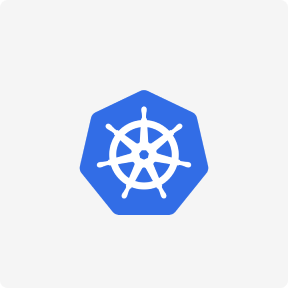Staff can ditch the worry about keeping the in-house infrastructure running and spend more time innovating. And they can begin to utilize AI and Machine Learning to gather and analyze data and learn from that. Microsoft has been investing in SAP apps for a long time – to run many aspects of its own $89.5 billion global empire – human resources, finance, logistics and supply chain, and more. In February of this year, it completed the move of the last of its SAP landscape to Azure. Estimates by its own SAP team are that the budget will be cut by 10-20% by this application transformation.
Bringing that entire setup to the cloud also means that you’ll need to navigate and troubleshoot database migrations across parallel workstreams and, oftentimes, multiple geographical destinations. With the HANA cloud, this is all abstracted away, and users can start with zero upfront cost. Since the migration from SAP BPC to SAP Analytics Cloud may not seem straightforward, organizations need to apply these tips/best practices for migration from SAP BPC to SAP Analytics Cloud for Planning successfully. In the SOAMANAGER transaction, create a web service endpoint by defining the web service binding and authentication methods. Many SAP customers are reluctant to move to S/4HANA just yet — or maybe ever. Here are some ways companies can optimize the SAP ERP Central Component and find ways to innovate.
There’s time to plan before the 2027 deadline
The number of reasons why you need to migrate isn’t big, but they are significant. Automated information systems can get proper data about the work of the company and the main tasks and goals of the organization. SAP is special software that automates the professional activity of different specialists that work with data. These applications are adapted for a wide range of industries and make work much easier. Best of all, the SAP HANA Cloud migration doesn’t need to be difficult.
Also driving down the cost is the SAP HANA cloud’s tiering capabilities. The top tier, high speed in-memory storage grants instant access to the most important data. Though it is common knowledge for the SAP HANA Service on Cloud Foundry, the other tiers provide all-new features. Many of these companies are already on the move, some have completed the migration. They are already aware that in the modern age of technology, moving at lightning speed is a possibility and a norm, so developing projects in beefy, complex on-premise systems can no longer be viable. Companies expect to meet demands in a flash, all thanks to the innovation of cloud technology, especially the HANA cloud.
Start realising the business value of SAP S/4HANA
The user can gather instant insights to any data at any time and from any device. It helps the person in making decisions with the growth of the business. The beautiful platform allows activities like planning, execution, report, and analysis with a shove. A good number of enterprises have already transformed their operations with the power of SAP s/4Hana. According to SAP, the total number of such transformations is above 1000. Businesses have also transformed their ways of action in parity with the changes.
SAP S/4HANA offers rich functionality and data analytics capabilities, providing businesses with real-time access to critical information and insights. This wealth of resources makes it incredibly user-friendly by providing ready-to-use solutions that cater to specific business requirements. SAP S/4HANA is a cloud-based business application designed to meet the specific requirements of small and medium-sized enterprises (SMEs). SAP S/4HANA Cloud, which takes advantage of cloud computing and other emerging technologies, can help your business expand in the years following a pandemic. Therefore, switching to SAP S/4HANA Cloud from your ERP system would benefit your company. A lack of scalability, inflexible storage, static computing power—these are just the beginning.
Don’t lift and shift the processes to SAP Analytics Cloud
The embedded analytics in S/4HANA lets users run reports directly on the ERP, a capability ECC does not have, he said. When transitioning from on-prem to AWS, the key to success is selecting a partner with a safe and fast framework for migrations. These transitions focus on automating the upfront assessment, infrastructure configuration, and data migration, which can help CIOs avoid the costs and complexities of a do-it-yourself migration. CIOs all know that ERPs like SAP run the business, especially for large complex enterprises that have developed their back and front office workflows over the years, if not decades. Deploy increasingly sophisticated and powerful apps on SAP HANA Cloud, regardless of size.
So new user experience, machine learning and all the new technologies that are coming out will be pushed towards SAP S/4HANA, a fast evolving and innovative solution. Waiting two or three years down the line risks making the gap wider for migration. With S/4HANA, businesses can say goodbye to boring, repetitive tasks thanks to the Robotic Process Automation (RPA) solutions that automate these mundane tasks. This leaves employees with more time to work on important tasks that require special attention. To make things even better, there are over 150 RPA bots available to use with S/4HANA.
Support and roadmap issues
An increasing number of organizations around the world are starting preparations for the end of support for SAP ECC in 2027. Nearly 86% of respondents in a poll about S/4HANA migration strategies were either in the planning stages of a migration or developing a business case for it, with 17% having previously completed a migration. Though many small and mid-size businesses run their ERP systems on-premise, there’s a clear reason that drives their solutions to the cloud. Cloud ERP systems such as SAP S/4HANA Cloud have a significant advantage as remote working and management is built-in by default.
- A lack of scalability, inflexible storage, static computing power—these are just the beginning.
- It’s important to weigh the costs and benefits of maintaining an aging system against starting fresh on a new platform with everything you’ll need to support future expansion.
- This is one of the main reasons why organizations tend to keep servers on premises to maintain control and avoid major changes to their ERP environment.
- However, during migration projects from PO to Integration Suite, one critical decision involves determining the approach for migrating ABAP proxy interfaces.
With the rapid evolution of technology, changes are seen to occur in enterprises and their way of functioning. An IDC survey estimated that between 2019 and 2021, 54% of SAP customers plan to adopt SAP S4/4HANA. Among them, 73% are choosing to run SAP S/4HANA in the cloud and others are considering hybrid deployment scenarios.
A very smooth process
You need to take into account some difficulties that are widely spread when businesses want to move. Business automation is a complex system but one of the most important parts of it is the SAP system. https://www.globalcloudteam.com/ That’s why you need to manage it effectively if you want to be successful. Your choice doesn’t lock you in—SAP HANA Cloud isn’t tied to one provider, so you can switch if and when you need to.
If you’re looking to renew hardware or hosting solutions because they are reaching end of line, then consider migrating immediately to avoid a ‘double’ move. Our advice is to go straight to SAP S/4HANA and purchase your hardware at the same time, so that it will SAP migration to cloud be compatible and certified for your new system. With predicted SAP consultant shortages, demand will almost certainly drive up the cost of quality consultants and the advice is not to delay seeking your external SAP specialists to support your migration.
Reasons why you should migrate to SAP S/4HANA
This can be done either manually or automatically to maximize resource allocation and performance. Many companies who want to make more out of their data have started the process, and some have already completed the migration. Watch the replay expert talk and discover how the migration to S/4HANA can be automated thanks to MIGNOW, a unique AI-based platform. External SAP certified migration consultants provide vital assistance in ensuring a seamless transition to SAP S/4HANA. However, with many companies globally already either starting their migration or progressing their plans to do so, there is predicted to be a shortage in the supply of skilled consultants.




